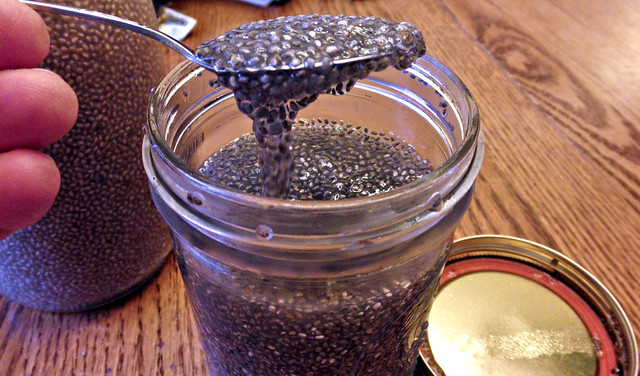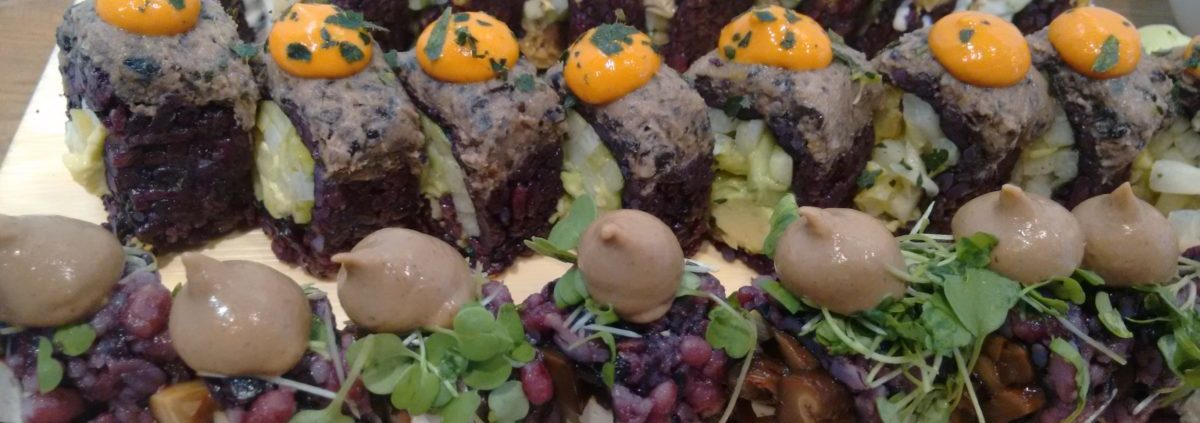
I’ve noticed a trend of late.
There are a gazillion gorgeous pics of kale maca blueberry hemp chia cacao smoothies, or acai berry spirulina matcha wheatgrass blah blah blah all over the internet.
On health and wellness websites, there is recipe after recipe for industrial strength raw/green superfood smoothies.
Please know – I have nothing against superfoods, or even their being in a smoothie. A smoothie can be a delicious treat.
And it’s not the raw crowd I’m getting at here (though my feelings on raw vegan are explored in this post).
My problem with all of this is as follows:
Some ‘holistic health coaches’ post these amazing pics of their latest superfood smoothie creations, but at the same time they’ll post recipes containing eggs, fish, yoghurt – or even meat (though of course this will be ‘grass-fed’, which we know is no better health or environment-wise than intensively farmed meat).
It seems strange to me to embrace superfoods so enthusiastically on the one hand, but on the other, keep scientifically proven harmful foods in your diet (and not only that, but to recommend them to others) as if the cocktail of superfoods cancels out the bad stuff.
It doesn’t seem a balanced way to live on a day-to-day basis.
Also – why drink your nutrients? Why not obtain them from chewing your food as nature intended? Dr Caldwell Esselstyn, former heart surgeon, author of ‘Prevent and Reverse Heart Disease,’ and all-round plant-based health expert has this to say:
Avoid smoothies. The fiber is so finely pureed and rapidly swallowed without the benefits of mixing with helpful bacteria in the mouth. The sugar is separated from the fiber of the fruit, bypasses salivary digestion and results in a surge of glucose. The fructose enhances inflammation, hypertension and endothelial injury. Chew your food.
And take a kale pineapple maca smoothie. Really? Is this from the maca plantation down the road? Maca comes all the way from the Peruvian Andes. Another popular smoothie ingredient, chia seeds, come from Mexico and Guatemala. How natural is it to take these superfoods that come from these far-flung corners of the globe and blitz them in a machine, and drink it with a straw?
Yes, I’m aware there are no rice paddies in London or New York, but in order to have varied grains in our diet, we NEED to eat whole grain rice. If you don’t live somewhere where the climate is conducive to producing a comprehensive array of nutrients in plant-food, then you have to buy what is available, and rice is a reliable staple.
I’m just saying, why go out of your way to buy an exotic (not to mention expensive!) superfood, when you don’t need it if you just eat well consistently?
Though kale is a common smoothie ingredient and in its own way is a superfood, I’m not lumping it in with the chia/maca collective. Kale is fabulous, I eat it almost daily. We all need frequent servings of dark leafy greens, and kale grows most everywhere. If I lived in China, I’d no doubt eat more pak choi. If I lived in the southern US states I’d surely be eating a lot more collard greens. Whatever your local dark leafy green, to get the most benefit from it, better that the majority of the time it is chewed rather than supped.
And of course I’m not saying never eat maca, chia or other South American super foods, they ARE super after all and have their own specific benefits – I’m just saying they shouldn’t be relied upon as a daily ingredient to nourish you – unless maybe you live in Central or South America.
Any move away from our meat and dairy heavy habits is good. And if someone gets into eating more veg and fruit initially because of smoothies – well, great. A green/superfood smoothie is scads better for you then a cheese roll, so I’m aware battles have to be carefully picked here. It’s way better to be crowding out the bacon sandwiches with supergreen concoctions than eating meat three times a day.
I think my takeaway points here are thus:
There is no point eating animal products and hoping raw green super-duper-food smoothies will cancel them out. And it’s not a good idea to rely on them for your daily nutrients.
I’m not as strict as Dr Esselstyn (but I am NOT an eminent experienced doctor either!) and don’t totally diss the smoothie as an entity ‘per se’, but you have to make up your own mind on this. I believe the odd high power smoothie is fine if you find yourself in a fantastic vegan smoothie bar, or you’re in a cool plant-based restaurant and fancy trying something from the lush-looking smoothie menu. But as a frequent player in your daily diet?
No.
It’s better to mainly chew your food from a whole state, gleaning your nutrients from a varied whole food, plant-based diet, full of everyday veg, fruit, beans, legumes, grains, nuts and seeds.
Beans, potatoes and rice may not be glam or exotic; and oats, onions and apples don’t sound as sexy as chia or spirulina, but they’ll get you the consistent and solid health foundation that I know you (and we all) desire.
